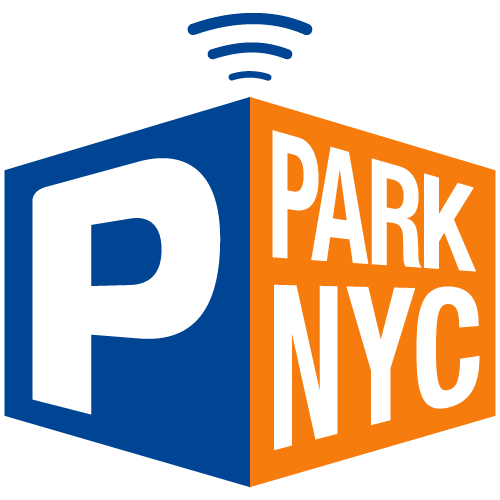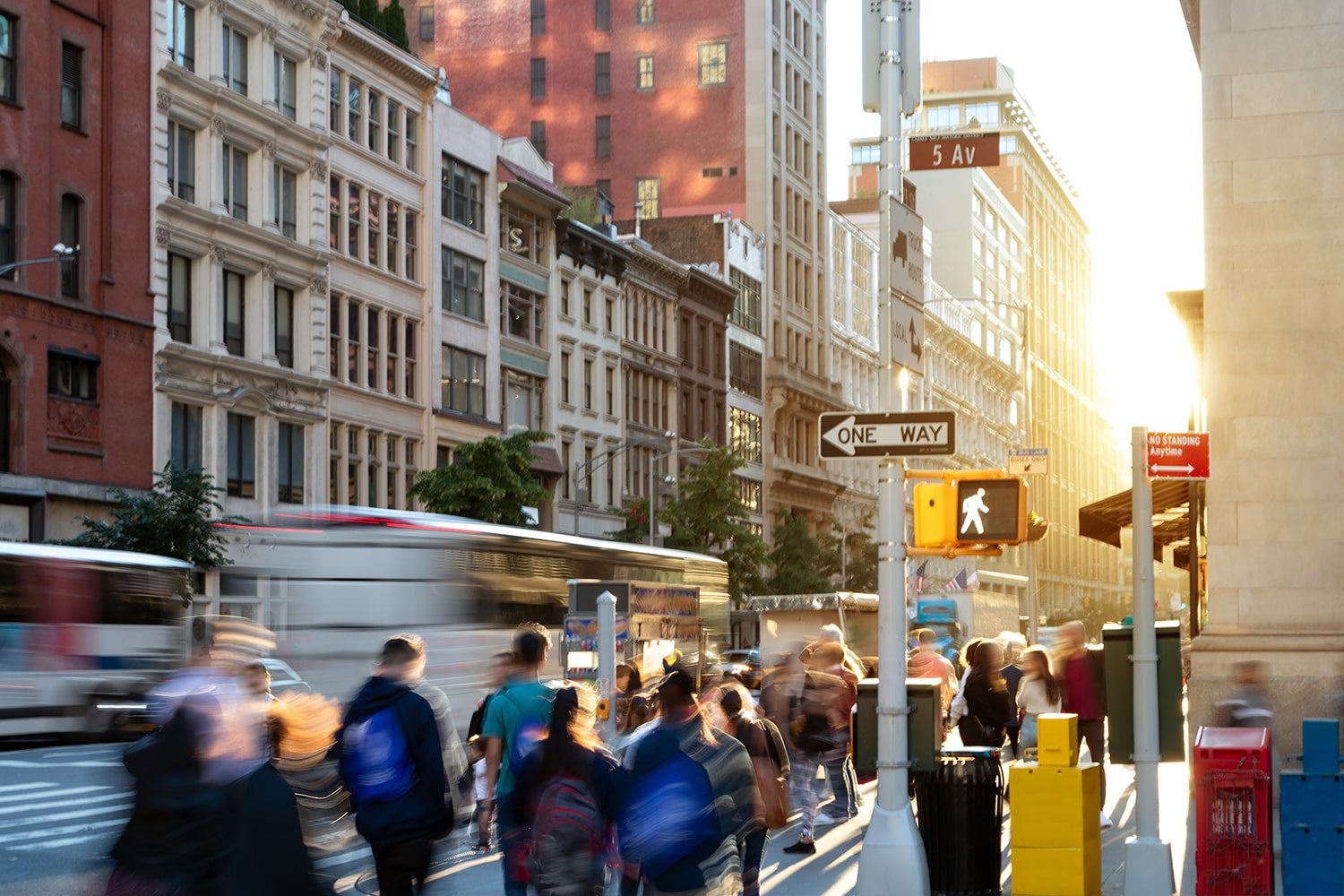
A Closer Look: The Rise and Downfalls of Street Parking
In New York City, street parking (and overnight parking in particular) hasn’t always been as common as it is today – in fact, NYC used to be geared more towards movement and pedestrians. Bans on permanent parking were in effect as early as the 1800s, and today, it is still illegal to park a car in the same spot for more than seven days in a row.
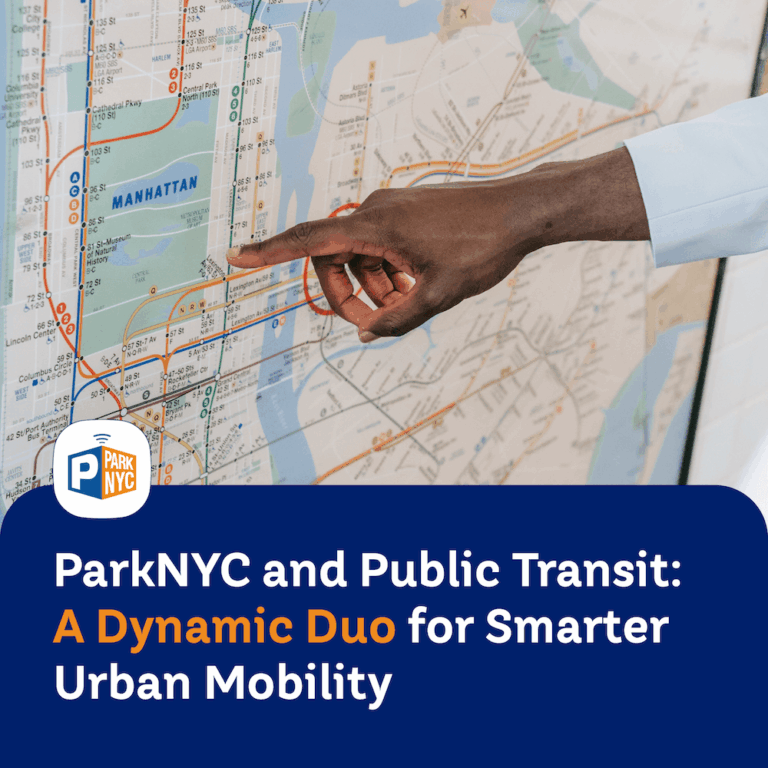
ParkNYC and Public Transit: A Dynamic Duo for Smarter Urban Mobility
New York City’s extensive public transit network and the ParkNYC mobile payment system together present a compelling solution to the city’s persistent traffic congestion and parking challenges. As one of the world’s most densely populated urban centers, New York City faces significant mobility issues, including limited parking availability, high levels of vehicle congestion, and environmental concerns related to emissions. Integrating ParkNYC with the city’s public transportation infrastructure creates a more efficient, convenient, and sustainable way for residents and visitors to navigate the city. This symbiotic relationship encourages multimodal transportation, reduces excessive car dependency, and enhances the overall urban travel experience. ParkNYC also improves the efficiency of parking management by reducing the time drivers spend searching for available spaces. This behavior, known as “cruising,” contributes significantly to urban congestion, according to transportation expert Donald Shoup. Studies show that mobile payment systems for parking can improve urban traffic flow and reduce carbon emissions associated with idling vehicles. A 2021 study by Geng et al. on smart parking solutions found that cities implementing mobile parking applications saw a 21% decrease in the time spent searching for parking. By adopting ParkNYC, New York City aligns itself with global efforts to integrate digital innovations into
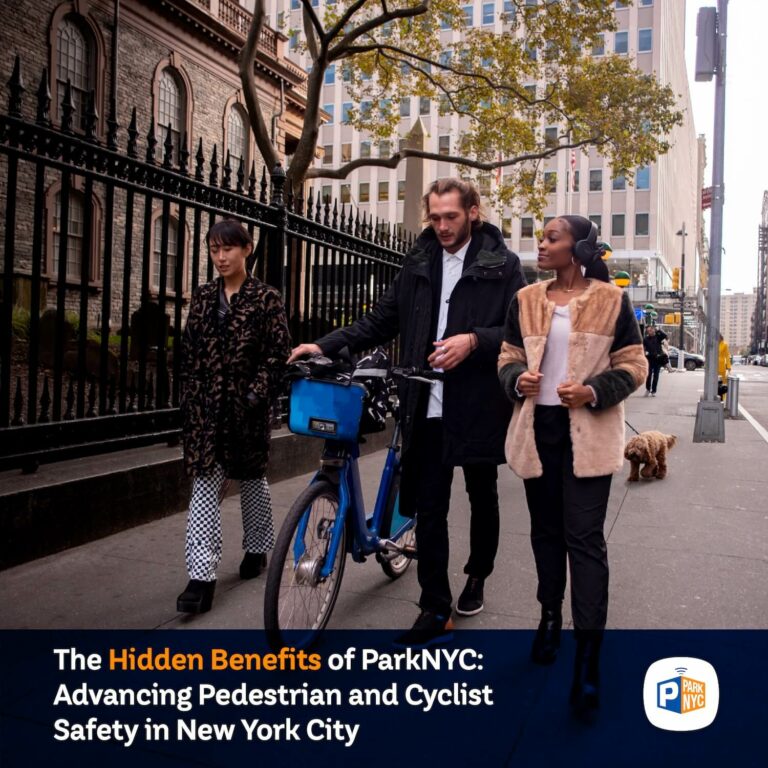
The Hidden Benefits of ParkNYC: Advancing Pedestrian and Cyclist Safety in New York City
Imagine walking along a bustling New York City street, only to see a cyclist swerve abruptly into moving traffic to avoid a double-parked SUV—an all-too-common and dangerous scenario. Poor parking behavior isn’t just an inconvenience; it creates real safety risks for everyone on the street. Solutions like ParkNYC, the city’s mobile parking payment platform, aren’t just about convenience—they offer a powerful, often-overlooked opportunity to digitize curb management, strengthen enforcement, and support Vision Zero’s mission to eliminate traffic-related fatalities. Double-parking remains a pervasive and dangerous issue in New York, particularly in dense commercial corridors. Delivery trucks, ride-share vehicles, and private cars frequently obstruct travel lanes under the pretext of “just a minute” stops. According to a 2022 study by Transportation Alternatives, these violations often force cyclists into active traffic lanes and reduce sightlines for pedestrians, significantly increasing the risk of collisions. Outdated parking meters only exacerbate the problem, encouraging risky behaviors like illegal parking or brief vehicle abandonments. These actions not only clog streets but also contribute to unpredictable traffic patterns that endanger all road users. ParkNYC addresses these issues by offering a streamlined, app-based method for paying for on-street parking. By allowing users to pay for and extend sessions remotely,
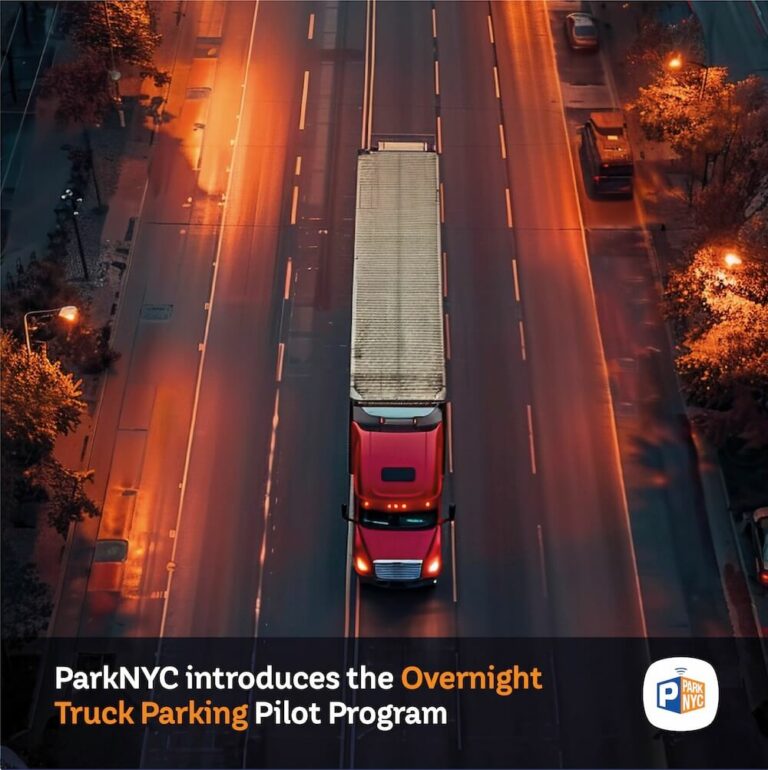
ParkNYC Introduces the Overnight Truck Parking Pilot Program
New York City is introducing a one-year Overnight Truck Parking Pilot Program to provide regulated and convenient parking solutions for truck drivers needing federally mandated rest breaks. This initiative addresses the shortage of legal truck parking spaces and aims to enhance safety, turnover, and compliance within designated corridors. Key Features of the Pilot Program: Dedicated Parking Spaces: Approximately 46 truck parking spaces will be available in key Industrial Business Zones (IBZs) across the city: Bronx: Ryawa Avenue (south side), from Manida St. to Halleck St Brooklyn: Flatlands Avenue (south side), from Erskine St. to Fountain Ave Queens: 56th Road (south side), from 43rd St. to 49th St Pay-by-App Technology: The program will utilize Pay-by-App technology to streamline payment options and ensure compliance, making it easier for drivers to manage their parking sessions. To facilitate seamless parking payments, businesses are encouraged to sign up for a Park NYC Business Account. This account allows companies to manage all employee parking transactions through a single Park NYC wallet, simplifying the payment process for fleet operations. Businesses can add an unlimited number of vehicles to their fleet and manage parking sessions efficiently. How to Get Started with a Park NYC Business Account: Sign Up:

How Ridesharing Companies and Cabs Impact Parking in NYC
New York City streets are a battleground—not just for honking cabs and daring cyclists but for something even more elusive: a decent parking spot. As ridesharing services like Uber and Lyft integrate into the city’s daily rhythm, they are reshaping how we think about curb space, congestion, and car ownership. But are they solving NYC’s notorious parking problem, or just making it worse? The Changing Role of the Curb Ever hailed an Uber only to watch it awkwardly pull over in a no-standing zone, hazard lights blinking, blocking an entire lane of traffic? You’re not alone. Ridesharing vehicles and cabs have fundamentally changed the function of the curb. Once a haven for parked cars, curbs have now become revolving doors for constant passenger pick-ups and drop-offs. They frequently double as unsanctioned loading zones—not to mention the city’s holiest of trash piles and, unfortunately, rat sanctuaries. In Manhattan’s most congested areas, research shows that as many as 80% of Uber and Lyft rides involve pick-ups or drop-offs in no-standing zones. This shrinks available parking and leads to increased double-parking, which not only squeezes out private vehicles but also disrupts bike lanes, bus stops, and delivery operations. It’s a domino effect:
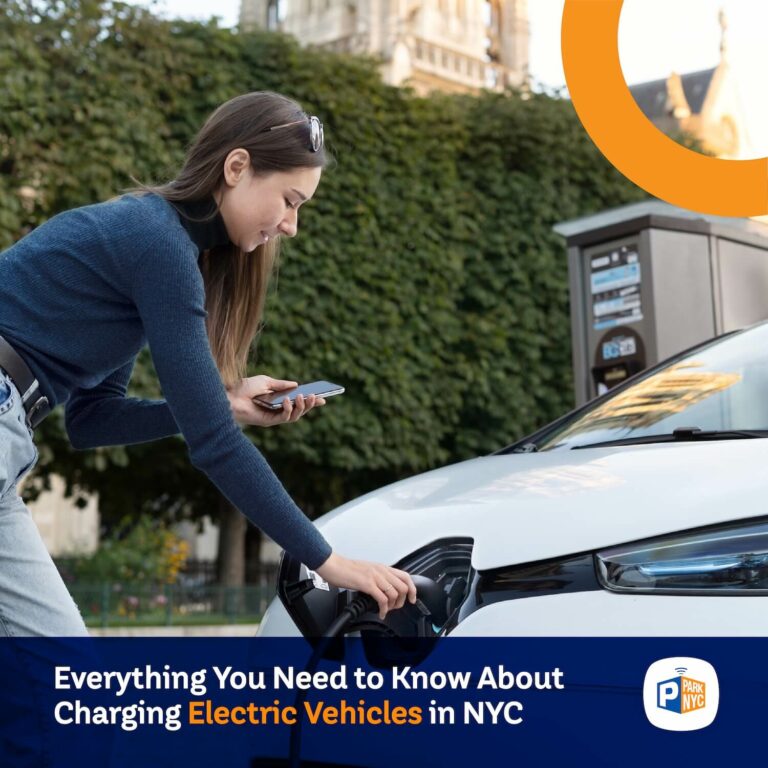
Everything You Need to Know About Charging Electric Vehicles in NYC
As electric vehicles (EVs) continue to gain popularity, New York City has been ramping up its efforts to expand the EV charging infrastructure. Whether you’re a seasoned EV owner or considering making the switch, staying informed about charging options is essential. Here’s a comprehensive guide to EV charging stations in NYC, including current resources, recent developments, and tips for making the most of the growing network. EV Charging Infrastructure in NYC New York City has made significant strides in expanding its EV charging network. The city boasts thousands of publicly accessible charging points, including a mix of Level 2 chargers and fast-charging stations (and that number is quickly increasing). This growing infrastructure reflects the city’s commitment to meeting its sustainability goals and accommodating the increasing number of EV drivers. Key Developments: Curbside Chargers Expansion: NYC has added hundreds of new curbside Level 2 chargers in neighborhoods with high EV adoption rates, such as Brooklyn Heights, Long Island City, and the Upper West Side. Fast Charging Hubs: The city features multiple fast-charging hubs across the five boroughs, including locations near Yankee Stadium in the Bronx and Flushing Meadows in Queens. Public Parking Garages: Several NYC public parking garages now feature expanded
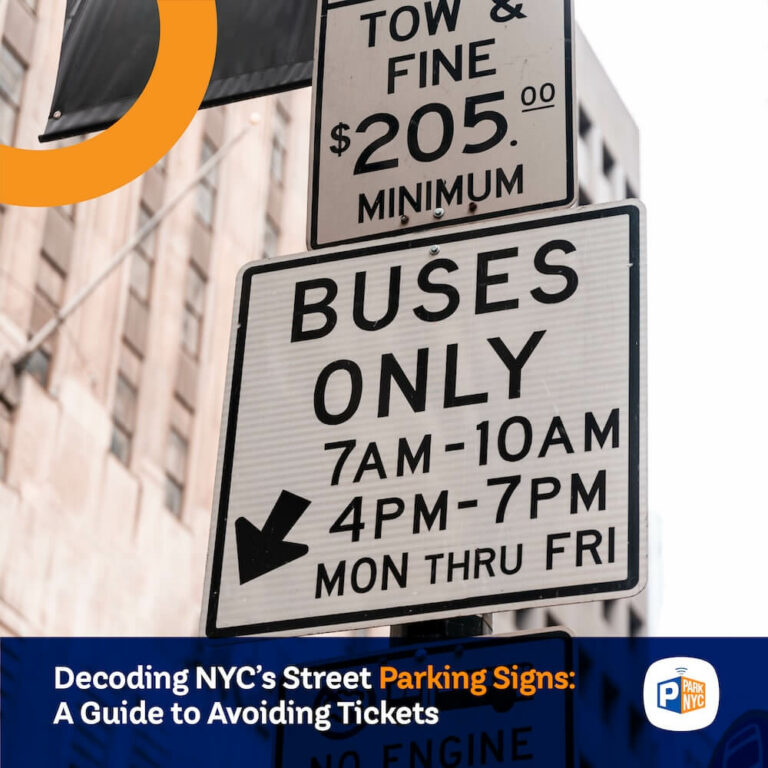
Decoding NYC’s Street Parking Signs
A Guide to Avoiding Tickets Parking in New York City is serious business even for locals. Parking regulations can change and figuring out what all the signs mean can feel overwhelming at first. We’re breaking down the most common street parking signs to help you avoid pesky tickets and the dreaded tow! Here’s what you need to know about NYC parking signs and what they mean: 1. Alternate Side Parking These signs indicate when parking is prohibited for street cleaning. You might see, “No Parking Tuesday & Friday, 8:30 AM – 10:00 AM”. This means cars must be moved during those hours to allow street sweepers to pass. Alternate-side rules are also suspended on major and some religious holidays, so check out our X account for updates or download the NYC Department of Transportation’s (DOT) Alt Side Parking Calendar. 2. No Standing Anytime This sign means you cannot stop or park your car in a particular area at any time, even briefly. These zones are typically found near fire hydrants, bus stops, and major intersections. 3. No Parking Anytime While you can’t park or leave your car unattended in these zones, you can stop briefly to pick up or drop
